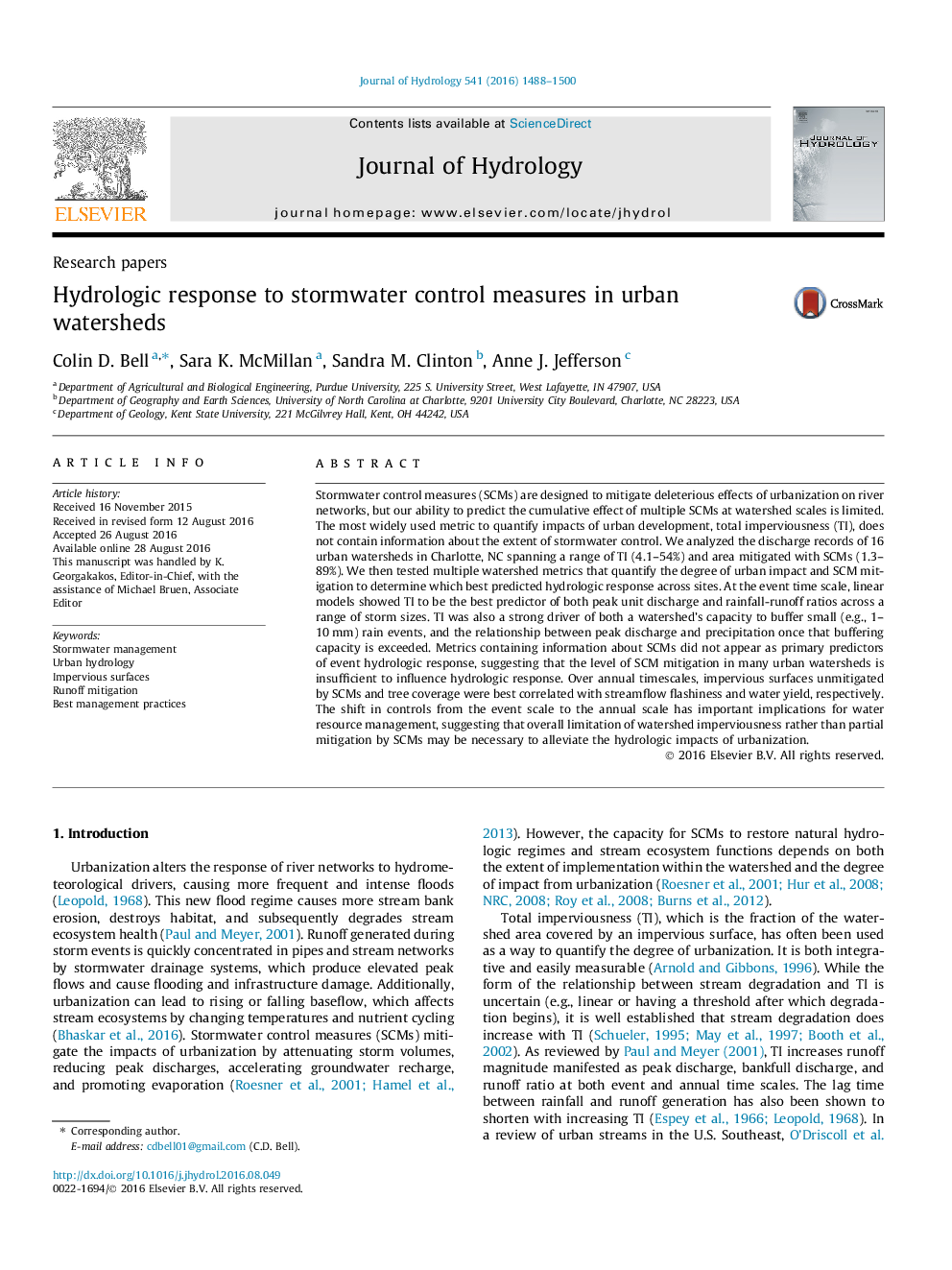| کد مقاله | کد نشریه | سال انتشار | مقاله انگلیسی | نسخه تمام متن |
|---|---|---|---|---|
| 6409513 | 1332870 | 2016 | 13 صفحه PDF | دانلود رایگان |
- Total imperviousness best watershed metric to explain event hydrology across sites.
- Stormwater management is only a secondary or tertiary control on event hydrology.
- Stormwater management affects hydrology on time scales longer than individual events.
- Tree coverage best control explains total runoff volume across sites.
Stormwater control measures (SCMs) are designed to mitigate deleterious effects of urbanization on river networks, but our ability to predict the cumulative effect of multiple SCMs at watershed scales is limited. The most widely used metric to quantify impacts of urban development, total imperviousness (TI), does not contain information about the extent of stormwater control. We analyzed the discharge records of 16 urban watersheds in Charlotte, NC spanning a range of TI (4.1-54%) and area mitigated with SCMs (1.3-89%). We then tested multiple watershed metrics that quantify the degree of urban impact and SCM mitigation to determine which best predicted hydrologic response across sites. At the event time scale, linear models showed TI to be the best predictor of both peak unit discharge and rainfall-runoff ratios across a range of storm sizes. TI was also a strong driver of both a watershed's capacity to buffer small (e.g., 1-10Â mm) rain events, and the relationship between peak discharge and precipitation once that buffering capacity is exceeded. Metrics containing information about SCMs did not appear as primary predictors of event hydrologic response, suggesting that the level of SCM mitigation in many urban watersheds is insufficient to influence hydrologic response. Over annual timescales, impervious surfaces unmitigated by SCMs and tree coverage were best correlated with streamflow flashiness and water yield, respectively. The shift in controls from the event scale to the annual scale has important implications for water resource management, suggesting that overall limitation of watershed imperviousness rather than partial mitigation by SCMs may be necessary to alleviate the hydrologic impacts of urbanization.
Journal: Journal of Hydrology - Volume 541, Part B, October 2016, Pages 1488-1500
